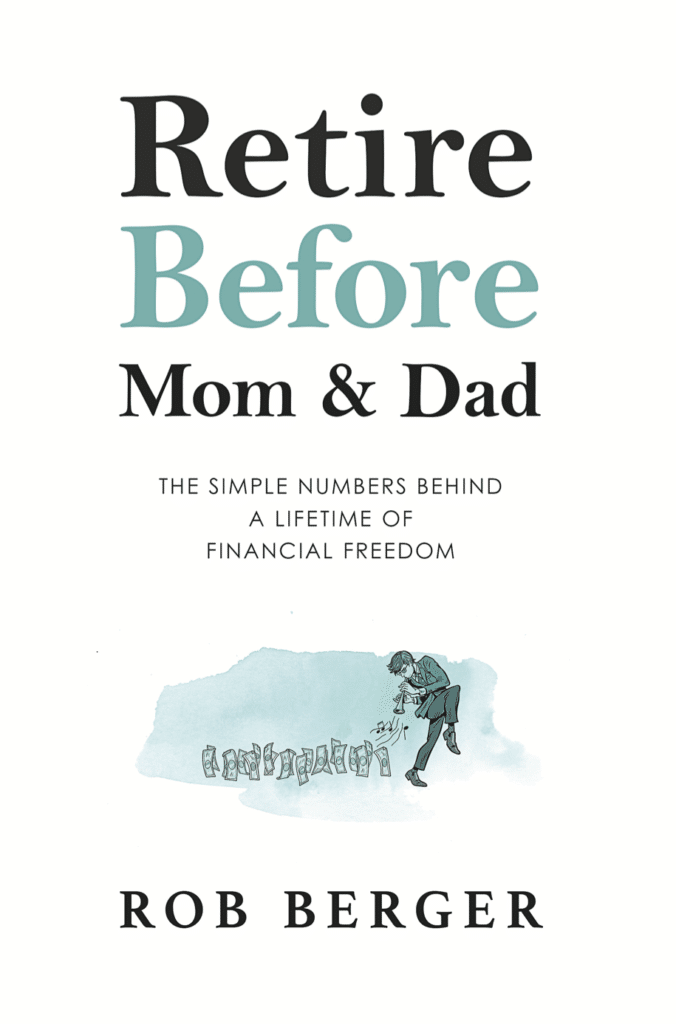How the Bucket Strategy and 4% Rule Work Together
Some of the links in this article may be affiliate links, meaning at no cost to you I earn a commission if you click through and make a purchase or open an account. I only recommend products or services that I (1) believe in and (2) would recommend to my mom. Advertisers have had no control, influence, or input on this article, and they never will.
Investing in retirement is scary for the most experienced investor. Combining the bucket strategy and 4% rule can help any retiree weather a bad market. Here’s how.

I retired (the second time) at the age of 51. Having just sold my online business, my wife and I went from earning and saving money to living off of our investments. And even though we could live comfortably on about 2% of our nest egg, I was scared to death of running out of money.
It felt like I was on a life boat in the middle of the ocean rationing what little food we had left.
So a recent article in the WSJ—Investors Approaching Retirement Face Painful Decisions (paywall)—didn’t surprise me. According to the article, nearly a third of investors age 65 or older sold ALL of their stockholdings between February and May.
The news saddened me. Having spent years studying retirement investing and spending, I know that market timing is a recipe for retirement disaster.
Fortunately, a combination of the bucket strategy and the 4% Rule can save the day.
Retirees are Long-Term Investors
The WSJ article featured 62 year old Dr. Craig Sklar. COVID had caused a decline in his medical practice, forcing him to furlough staff and take on emergency loans. At the same time, his portfolio fell during the March Madness, as I like to call it.
So it’s understandable that he sold much of his stock investments. Understandable, but probably a mistake. He explained his decision saying, “I don’t have 10 to 15 years left to recover my losses.” Actually, he has more like 30.
Retirees are long-term investors. If we assume Dr. Sklar lives to the age of 95, he still has 33 years left on this rock. That’s more than 3 decades of investing, long-term by any definition.
Of course, he will be spending some of his investments along the way. As he pointed out to the WSJ, “I’ll need my cash to live on.”
And that raises an important question—how does a retiree reconcile the current need for cash with the long-term need for market returns that only stocks can provide?
The Bucket Strategy and 4% Rule
The answer is a combination of two retirement money management frameworks—the Bucket Strategy and the 4% Rule.
The Bucket Strategy
The Bucket Strategy helps us divide our retirement money between short-term spending needs and long-term investment needs. In its simplest incarnation, we use just two buckets—Cash and Investments.
Cash Bucket: This bucket holds three to five years worth of living expenses in cash (checking, savings, CDs, short-term bonds). Remember to deduct from your living expenses any other types of retirement income (e.g., pension, social security) before calculating your cash bucket needs. For example, if you need $75,000 a year before taxes, and social security provides $25,000, a 5-year cash bucket would hold $250,000 (($75,000 – $25,000) x 5 years).
Investment Bucket: Here we hold the remainder of our retirement funds in a diversified portfolio of low-cost index funds. The question we have to answer, however, is exactly what asset allocation to hold in this bucket. Is it 100% stocks? A 50/50 portfolio of stocks and bonds? Something else?
To answer these questions, we turn to the 4% Rule.
The 4% Rule
The 4% Rule arose from the work of financial advisor William Bengen. In a 1994 study, he found that a retiree could spend 4% of his nest egg in year one of retirement, adjust that amount by the rate of inflation each year, and not run out of money for at least 30 years (and in most cases, 50 years or more).
What doesn’t get as much attention is the asset allocation Bengen assumed in his study. His primary assumption was a portfolio of 50% stocks (tracking the S&P 500 index) and 50% intermediate term treasuries. Further, he assumed the retiree rebalanced the portfolio annually.
What they didn’t do was sell all their stocks in a bad market. And his study covered some really bad markets—1929 stock market crash, the final years in the 1930s, the stagflation of the 1970s. Through all of these difficult times, the 4% Rule survived.
Bengen did look at other asset allocations, ranging from 100% bonds to 100% stocks. What he found is that portfolios with a stock allocation between 50% and 75% lasted the longest. Add more stocks and the market volatility would hurt the unfortunate retirees who retired just before big market declines (particularly if inflation spiked). Hold less than 50% stocks and the returns were not sufficient to sustain a 30-year retirement in many cases.
So just like Goldilocks and The Three Bears, a 50% to 75% stock allocation is “just right.”
Putting it All Together
If we follow the 4% Rule, we want our overall portfolio to consist of 50% to 75% stocks. Here we combine both of our buckets (cash and investments) to determine our overall asset allocation. There are several ways to track our asset allocation across all our accounts.
The most effective tool and the one I use is Personal Capital. It’s free and it enables you to link all of your investment accounts (retirement and taxable) as well as all of your cash accounts. Once linked, you can see your asset allocation with a click of the mouse.
It’s here that the Bucket Strategy and the 4% Rule work together. The Bucket Strategy serves two critical roles. First, of course, it assures we have the cash we need for everyday expenses. Second, by having a cash bucket of three to five years, we are better positioned to handle the fear of market declines in our investment bucket.
This second objective cannot be overstated. Fear is what often drives any investor to sell during sudden market drops. It’s exactly what more than 100 years of data and experience tell us we shouldn’t do. If five years of living expenses in cash isn’t enough to calm your fears, than make it six or seven.
As you make these decisions, be sure to keep an eye on your overall asset allocation. So long as your stocks don’t drop below 50% of your portfolio, you’re still following the 4% Rule as envisioned by Bengen.
How Retirees Can Survive a Bear Market [Video]
New to investing and managing your money? Check out my book,
Retire Before Mom and Dad.
“This book is a must-have for anyone, regardless of age, to understand how to grow and protect our money over the course of our lives.” — Adrienne
Rob Berger is a former securities lawyer and founding editor of Forbes Money Advisor. He is the author of Retire Before Mom and Dad and the host of the Financial Freedom Show.
